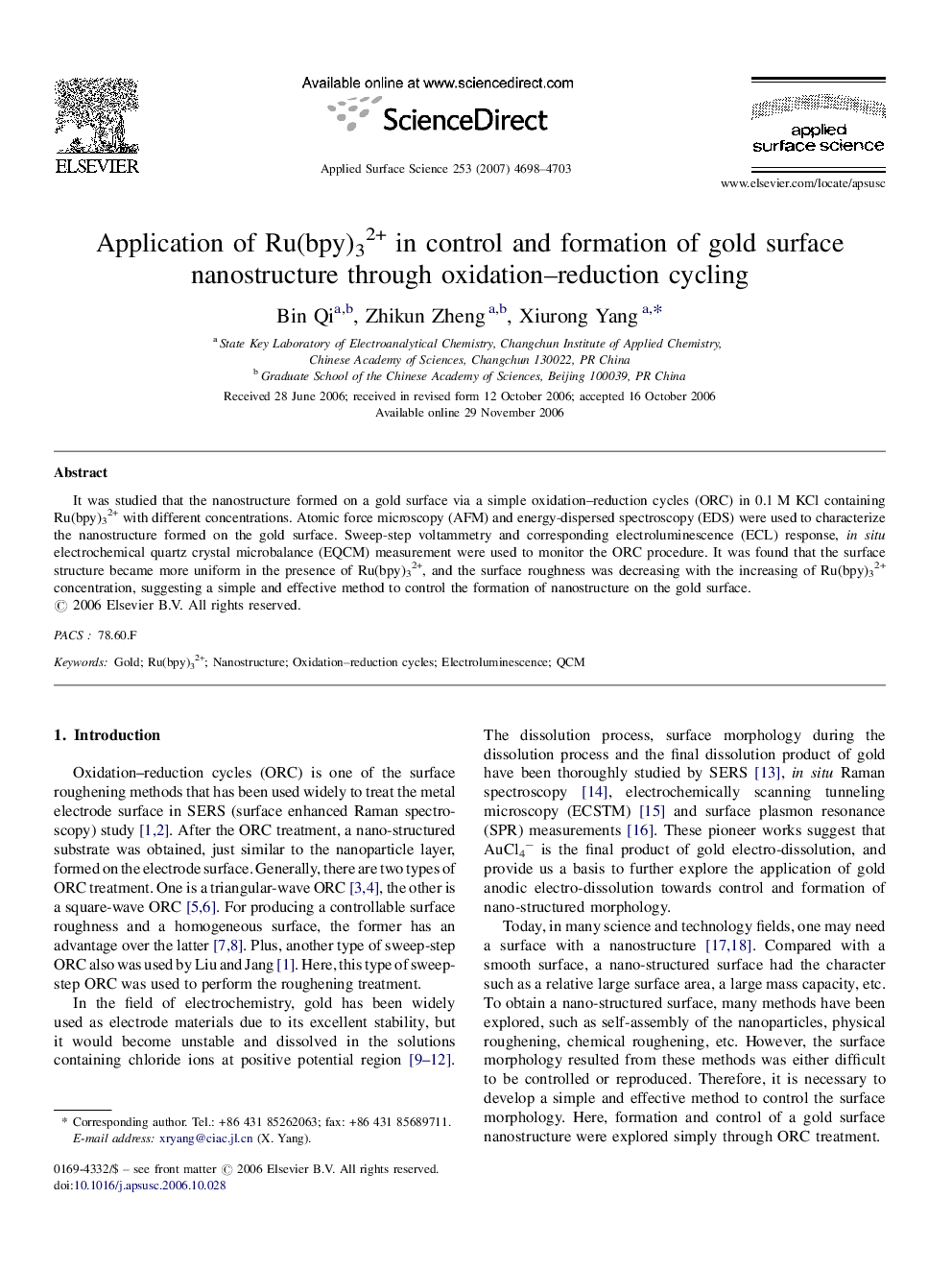| Article ID | Journal | Published Year | Pages | File Type |
|---|---|---|---|---|
| 5366034 | Applied Surface Science | 2007 | 6 Pages |
It was studied that the nanostructure formed on a gold surface via a simple oxidation-reduction cycles (ORC) in 0.1Â M KCl containing Ru(bpy)32+ with different concentrations. Atomic force microscopy (AFM) and energy-dispersed spectroscopy (EDS) were used to characterize the nanostructure formed on the gold surface. Sweep-step voltammetry and corresponding electroluminescence (ECL) response, in situ electrochemical quartz crystal microbalance (EQCM) measurement were used to monitor the ORC procedure. It was found that the surface structure became more uniform in the presence of Ru(bpy)32+, and the surface roughness was decreasing with the increasing of Ru(bpy)32+ concentration, suggesting a simple and effective method to control the formation of nanostructure on the gold surface.
